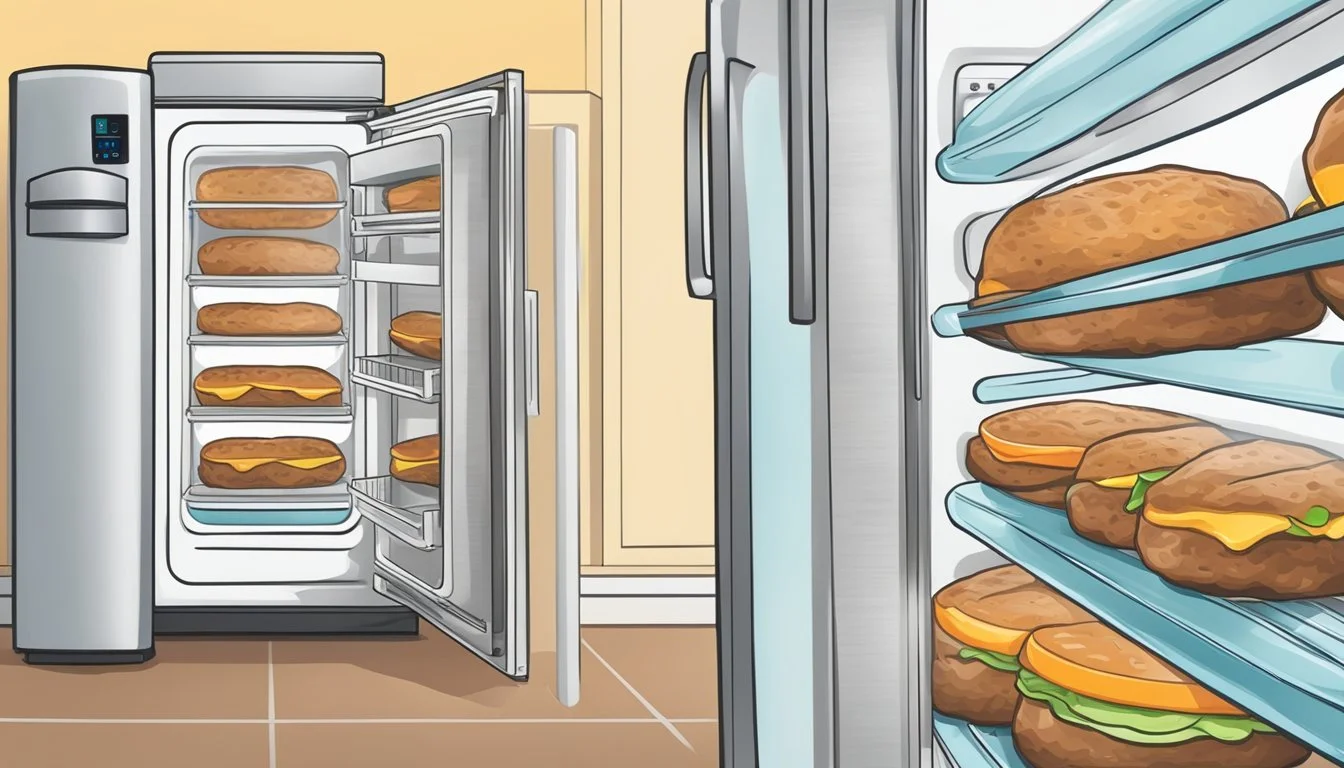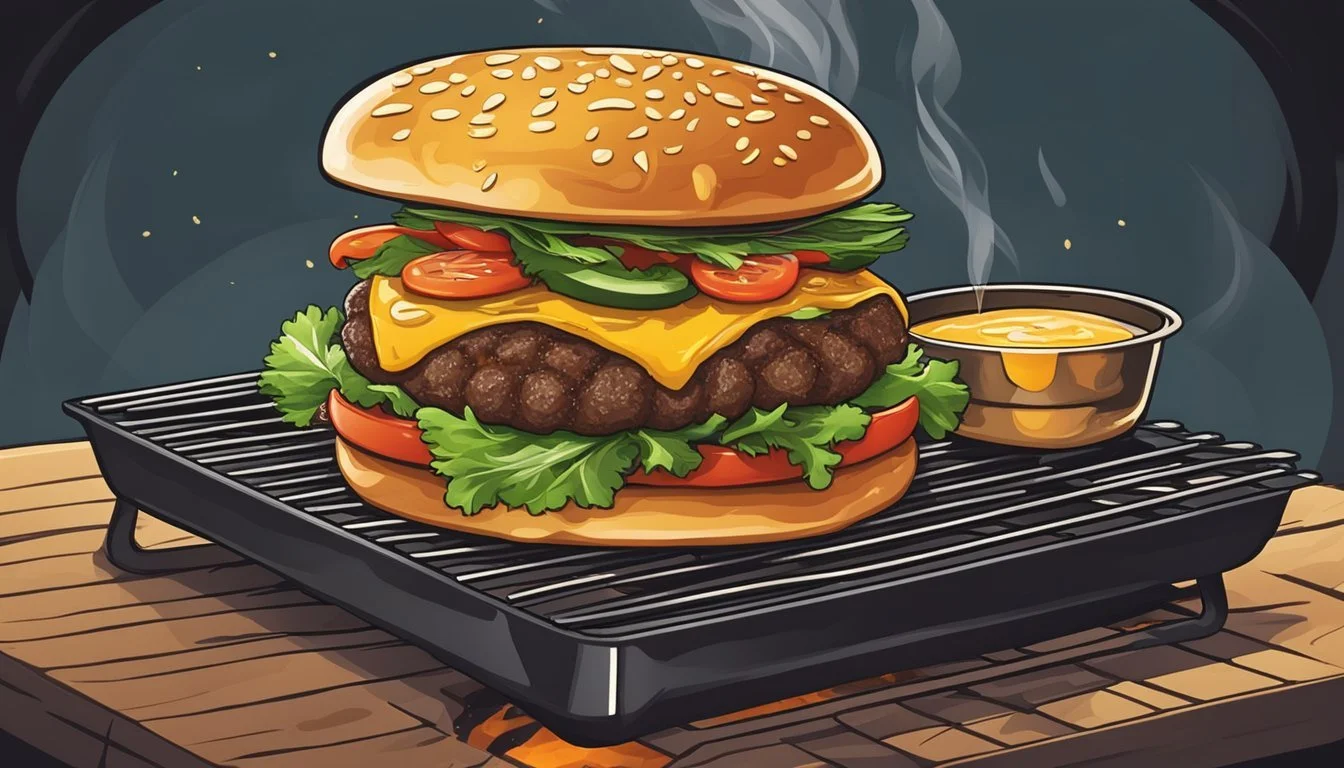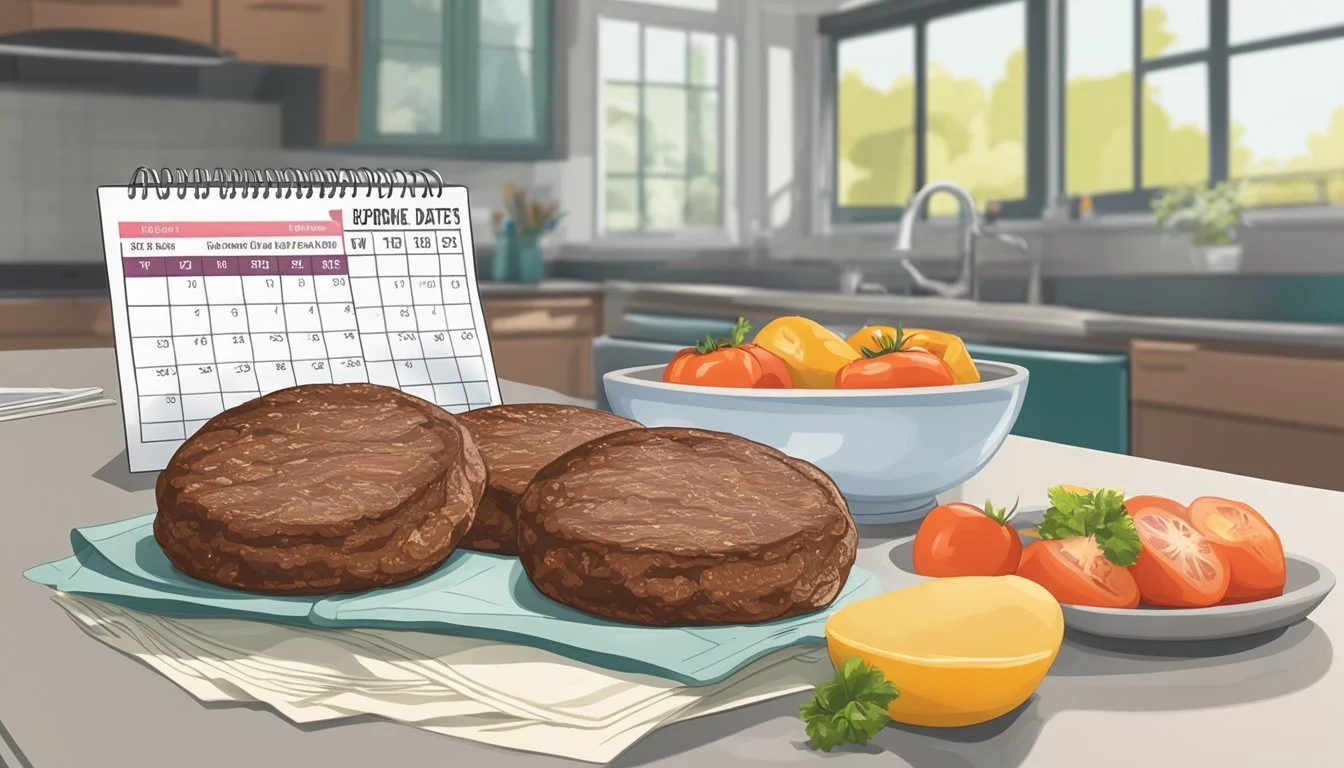How Long Do Beef Patties Last?
Safe Storage Tips and Guidelines
When it comes to storing beef patties, understanding their shelf life is crucial for ensuring both quality and safety. Properly stored frozen beef patties can last up to six months in the freezer at 0°F. However, while they remain safe to eat beyond this period, their quality may begin to decline.
In the refrigerator, the shelf life for fresh beef patties is significantly shorter. Beef patties should be consumed within three to five days if kept at a temperature of 40°F. Packaging plays a vital role in preserving their freshness—airtight containers or vacuum-sealed bags are highly recommended.
Consumers should also recognize signs of spoilage to avoid potential health risks. Discoloration, such as a greyish or brownish hue, indicates oxidation and loss of freshness in beef patties. Paying attention to these details ensures you enjoy the best possible taste and safety from your beef patties.
Assessing Freshness and Quality
When assessing the freshness and quality of beef patties, key factors such as texture, color, and odor play significant roles. Recognizing signs of spoilage is crucial to ensuring that the beef patties are safe to consume.
Indicators of Freshness
Fresh beef patties possess a firm texture and a bright red color. The surface should feel slightly moist but not wet.
Packaging also plays a role; vacuum-sealed containers tend to maintain freshness longer by minimizing exposure to air.
The beef should have a neutral, meaty smell, without any sour or off-putting odors.
Another important indicator is the sell-by or use-by date. Properly stored beef patties in their original packaging are typically safe to use up to two days past these dates if refrigerated at 40°F (4.4°C).
Detecting Spoilage
Detecting spoilage in beef patties involves examining several critical aspects:
Texture: Spoiled patties may develop a slimy texture, indicating bacterial growth.
Color: A significant color change from red to brown or greyish tones is a worrying sign.
Odor: An unpleasant, sour, or rancid smell suggests the patties have gone bad and should be discarded.
Appearance: Look for signs of mold or freezer burn. Dry spots that appear greyish or brown indicate freezer burn, which affects taste and texture.
Checking these factors regularly ensures that consumers can confidently assess the edibility and quality of their beef patties.
Proper Storage Solutions
Proper storage is critical to ensure beef patties stay fresh and free from harmful bacteria. Different techniques apply whether the patties are kept in the refrigerator or the freezer, each aiming to maximize their shelf life.
Refrigerator Storage
When storing beef patties in the refrigerator, consider the following guidelines to maintain freshness.
Raw beef patties should be stored on the bottom shelf to prevent any juices from contaminating other foods. Ideally, keep them in their original packaging or wrap them tightly in plastic wrap or aluminum foil for additional protection.
Airtight containers and plastic bags are also suitable, provided they are sealed well to limit exposure to air and moisture. Beef patties in the refrigerator should be used within 1 to 2 days for optimal quality and safety.
Freezer Storage Techniques
Freezing beef patties ensures long-term storage. For maximum quality, consider using freezer paper, heavy-duty aluminum foil, or freezer bags.
First, individually wrap each patty with plastic wrap to avoid sticking. Place the wrapped patties in a freezer-safe bag or an airtight container. It's crucial to remove as much air as possible before sealing to prevent freezer burn.
Beef patties can be stored safely in the freezer for 4 to 6 months. Label the packages with the date of freezing to keep track of their shelf life. Maintaining a constant freezer temperature of 0°F (-18°C) or lower is essential for preserving taste and texture.
Freezing and Shelf Life
Understanding how long beef patties can be stored in the freezer helps maintain their quality and safety. Key points to consider include the typical shelf life of frozen beef patties, factors that affect how long they last, and the impact of freezer burn.
Shelf Life of Beef Patties
Frozen beef patties can last between 4 to 6 months in a freezer maintained at 0°F (-18°C). Proper packaging plays a crucial role in preserving their quality. Commercial vacuum-sealed patties tend to last longer than homemade ones due to reduced air exposure. Always label the packaging with the freezing date to monitor their duration in storage accurately. Using and eating patties within the recommended timeframe ensures optimal taste and texture.
Factors Influencing Frozen Beef Longevity
Several elements contribute to the longevity of frozen beef patties:
Type of Packaging: Vacuum-sealed packaging helps minimize air exposure, extending the shelf life.
Freezer Temperature: Consistently maintaining the freezer at 0°F or lower helps preserve the quality and safety of beef patties.
Freezer Placement: Storing patties in the coldest part, such as the back or bottom shelf, reduces temperature fluctuations.
Taking these factors into account can help prolong the beef patties' shelf life while maintaining their quality.
Understanding Freezer Burn
Freezer burn occurs when air reaches the food's surface, causing dehydration and oxidation. This results in dry, grayish-brown patches that affect both texture and flavor, but not safety. Proper packaging, like vacuum-sealing or using airtight plastic wraps, can prevent freezer burn. Although freezer-burned beef patties remain safe to eat, their degraded quality often makes them less appetizing.
By understanding these aspects, individuals can better manage their freezer storage and enjoy high-quality beef patties for an extended period.
Thawing Methods and Safety
Understanding the best practices for thawing beef patties ensures food safety and preserves quality. Key methods include refrigerator thawing, cold water thawing, and microwave thawing, each with its own requirements and safety considerations.
Safe Thawing Procedures
The refrigerator is the safest method for thawing beef patties. It allows the meat to thaw gradually, maintaining a constant safe temperature of 40°F (4°C) or below. Place patties on a plate to catch drips and prevent cross-contamination. Generally, refrigerator thawing requires 10-12 hours, so plan ahead.
For quicker thawing, use the cold water method. Submerge beef patties in a leak-proof plastic bag and place them in a bowl of cold water. Change the water every 30 minutes. Small quantities can thaw in about an hour, while larger quantities take longer. This method prevents the meat from entering the temperature danger zone (40-140°F).
Microwave thawing is the fastest but requires caution. Use the defrost setting and monitor to prevent partial cooking. After thawing in the microwave, cook immediately as some areas may reach temperatures where bacteria can grow.
Thawing and Refreezing Considerations
Refreezing thawed beef patties is possible under the right circumstances. If thawed in the refrigerator, patties can be safely refrozen within 3-5 days, although quality may suffer slightly. Avoid refreezing if thawed via cold water or microwave methods due to higher risk of bacterial growth during these processes.
Proper packaging helps prevent freezer burn, which can affect the texture and taste. Tightly wrap patties in plastic wrap or aluminum foil, or use vacuum-sealed bags. Label with date and content for easy tracking. Freezer burn doesn’t make beef unsafe but can make it less enjoyable to eat.
Maintaining safe thawing practices prevents foodborne illness and ensures that beef patties remain flavorful and ready for your next meal.
Food Safety and Handling
Proper handling and cooking of beef patties are crucial to prevent foodborne illnesses. Below are guidelines on preventing bacterial growth and achieving safe cooking temperatures.
Preventing Bacterial Growth
To minimize bacterial growth, beef patties should be stored on the bottom shelf of the refrigerator. Raw ground beef should be used within 1 to 2 days. Cooked ground beef can be safely stored in the refrigerator for 3 to 4 days.
Cross-contamination poses a significant risk. Always use separate utensils and cutting boards for raw and cooked beef. Beef patties should be wrapped tightly in plastic wrap or kept in airtight containers to avoid cross-contamination with other foods.
Adhering to these guidelines can help reduce the risk of foodborne illness and ensure that the beef patties remain safe to eat.
Temperature Guidelines and Cooking
The United States Department of Agriculture (USDA) recommends cooking beef patties to an internal temperature of 160°F (71.1°C) to destroy harmful bacteria. Consumers should use a food thermometer to check the internal temperature of the patties.
In restaurants, ground beef should be cooked to 155°F for at least 17 seconds. At home, the simpler guideline is to ensure beef patties reach a consistent internal temperature of 160°F. This helps avoid inconsistent results and ensures food safety.
Leftovers should be reheated to an internal temperature of 165°F. This ensures any remaining bacteria are destroyed, reducing the risk of food poisoning. Following these cooking and storage guidelines helps maintain the safety and quality of beef patties.
Maximizing Flavor and Texture
Proper handling and cooking techniques play a crucial role in preserving the flavor and texture of beef patties. Key factors include appropriate freezing methods and cooking practices that enhance taste while ensuring quality and safety.
Freezing for Optimal Taste
Freezing beef patties correctly is essential to maintain their flavor and texture. Beef patties should be stored at 0°F or lower. This low temperature helps preserve the protein and prevent the patties from deteriorating over time.
Key Tips:
Packaging: Wrap each patty tightly in plastic wrap or aluminum foil to prevent freezer burn and discoloration.
Storage Duration: For best quality, use within 4 months. While they can remain edible for up to 6 months, their texture starts to decline.
Signs of Spoilage: Watch for signs such as blood spots and unusual discoloration, which indicate that the patties may no longer be safe to consume.
Maintaining proper freezer storage practices ensures that beef patties remain flavorful and retain their optimal texture until they're ready to be cooked.
Cooking for Ideal Flavor and Texture
Cooking beef patties properly enhances their taste and texture, making them more enjoyable. The grill is a popular choice for cooking beef patties as it adds a smoky flavor and creates a nice char on the outside.
Key Tips:
Fat Content: Higher fat content patties often result in juicier and more flavorful burgers. Opt for a balance that suits your taste.
Cooking Method: Whether grilling, pan-frying, or broiling, ensure the patties reach an internal temperature of 160°F to ensure safety.
Avoid Overcooking: Overcooking can lead to dry, tough patties. Keep an eye on cooking times and use a meat thermometer for accuracy.
Resting Time: Let the patties rest for a few minutes after cooking to retain their juices.
Proper cooking techniques guarantee that beef patties remain both flavorful and tender, making for a delightful eating experience whether served as a burger, in a chili, or alongside a roast.
Labeling and Expiration Dates
Properly labeling beef patties is essential for tracking freshness and ensuring safe consumption. This section covers the importance of using clear labels and understanding expiration and usage dates.
Tracking Freshness with Labels
Labeling beef patties helps in tracking their shelf life efficiently. Each package should have a clear label indicating the contents and the date of freezing. For homemade patties, it's beneficial to include the preparation date.
Using air-tight, freezer-safe bags or containers can maintain quality, and labels should be placed where they are easily readable. Pre-printed labels with spaces for dates can save time. Regularly checking and updating labels ensures that older patties are used first, reducing the risk of consuming spoiled meat.
Recognizing Expiration and Usage Dates
Beef patties have specific guidelines regarding expiration and usage dates. While frozen patties can technically be stored indefinitely, their quality diminishes over time. A general rule is to use frozen raw beef patties within 3 to 6 months for optimal taste and texture.
For patties stored in the refrigerator, it’s important to adhere to the 1 to 2-day usage timeframe. Expiration dates on packaging help consumers understand when the product is best consumed. Always check for signs of spoilage, such as changes in color or odor, before cooking. Marking the expiration dates on the labels ensures meat is consumed while still fresh and safe.
Comparative Storage Practices
Understanding how different storage methods impact the shelf life of beef patties can help ensure food safety and quality. This section explores storage differences between ground beef and other meats, as well as commercial versus homemade patties.
Ground Beef Versus Other Meats
Ground beef has a shorter shelf life compared to whole cuts like steaks or roasts. Fresh ground beef should be used within 1 to 2 days when kept in the refrigerator at 40°F (4.4°C). Raw ground beef can be frozen for up to 4 months before quality diminishes. In contrast, whole cuts like steaks and roasts can last 6 to 12 months in the freezer.
Storage conditions also affect shelf life. Raw beef, especially ground, must be stored in airtight containers to prevent spoilage and bacterial growth. Cooked meats like meatloaf or chili have better longevity in the refrigerator, typically lasting 3 to 4 days, and can be frozen for up to 3 months. Different meats have distinct storage needs; for instance, pork and chicken have similar storage guidelines but can develop spoilage more quickly than beef.
Commercial Patties Versus Homemade
Commercial beef patties generally have a longer shelf life than homemade due to the vacuum-sealed packaging often used in production. Frozen commercial patties can last between 4 to 6 months, retaining their quality better when stored at 0°F or lower. This packaging method minimizes exposure to air, reducing the risk of freezer burn and bacterial contamination.
Homemade patties, on the other hand, should be carefully wrapped in plastic wrap or placed in airtight containers before freezing. They last around 3 to 4 months before they begin to lose flavor and texture quality. Regular freezer temperature checks can prevent deterioration, as colder and consistent temperatures help prolong shelf life. Tips for freezing homemade patties include using double layers of packaging and labeling with dates to track storage time.
Economic Considerations
When thinking about the economic aspects of storing beef patties, it’s essential to look into budgeting with frozen patties and the value of bulk storage. By evaluating these factors, individuals and businesses can manage costs effectively.
Budgeting with Frozen Patties
Purchasing frozen beef patties can be more budget-friendly compared to fresh alternatives. By opting for frozen patties, consumers can take advantage of sales and bulk buying, which lowers the cost per pound.
Proper freezing tips include maintaining a consistent freezer temperature at or below 0°F to ensure the patties' longevity. This practice minimizes waste, reducing the financial burden of spoiled meat.
It is important to separate patties before freezing to avoid clumping, allowing for easy portion control and reducing the energy used during multiple freezer openings.
Bulk Storage and Long-Term Value
Storing beef patties in bulk capitalizes on cost savings, as bulk purchases typically come at a lower price per unit. For businesses, this means a higher profit margin, and for families, a lower overall grocery bill.
Freezer capacity plays a crucial role in bulk storage. Ensuring ample space and maintaining optimal freezer temperatures can extend the shelf life of beef patties up to six months without sacrificing quality.
By utilizing weight-specific storage methods like vacuum sealing and labeling with dates, individuals can efficiently manage inventory and avoid unnecessary losses, assuring long-term value in their purchase decisions.








